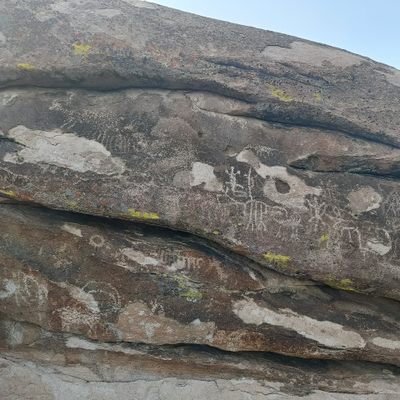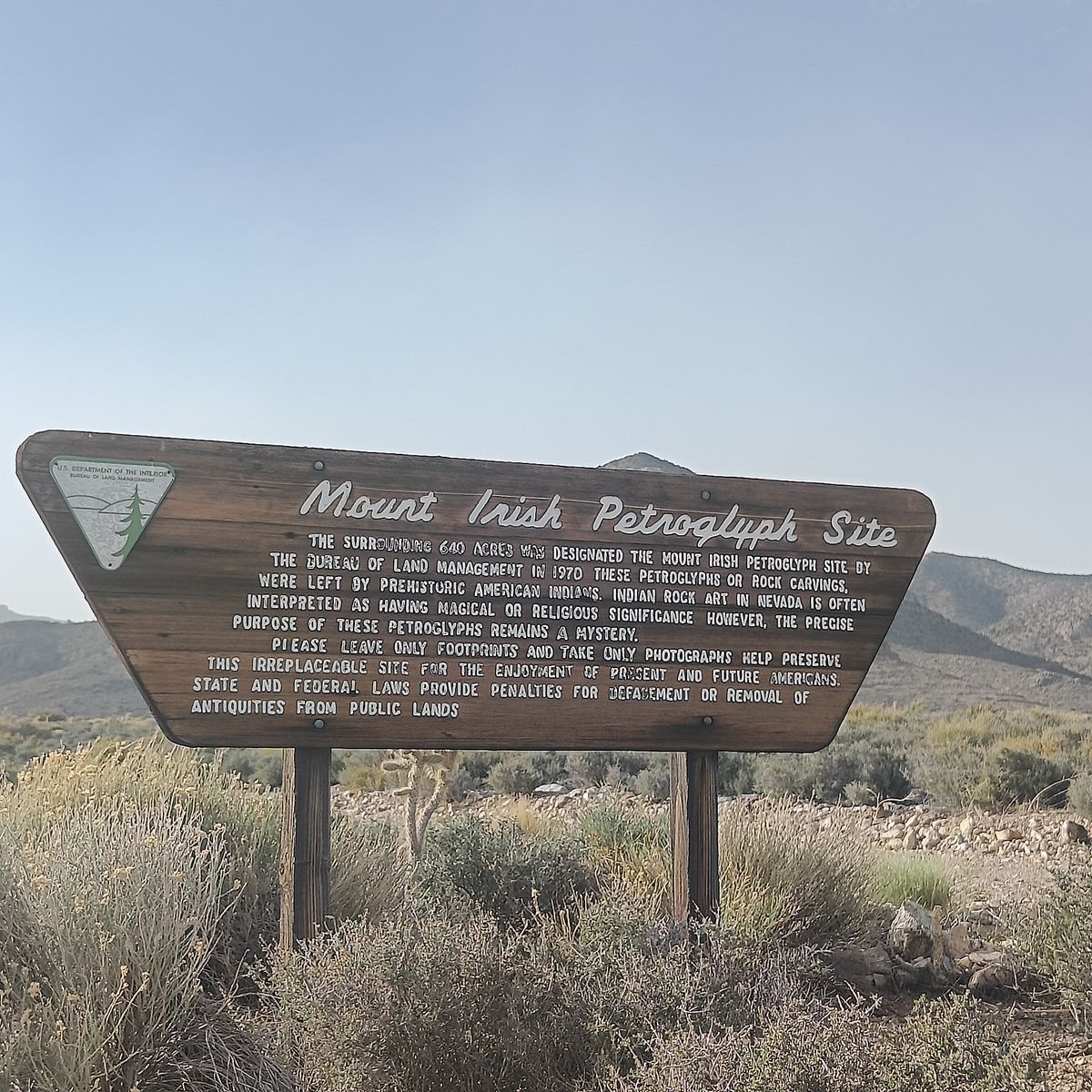About
The petroglyphs at Mt. Irish are one of the few indigenous sites found in Nevada that give visitors an important look into the people that lived in the region since roughly 1000 B.C.
The petroglyphs, pottery shards, and other items found at the site are believed to date back to between 1 and 1500. The petroglyphs are carved into the rocks, where the so-called desert varnish is removed from the stone to reveal brighter colored rock beneath. Most of the drawings are of bighorn sheep, which are thought to have been a staple food for the indigenous cultures. There are also drawings of people and abstract symbols such as water and spirals.
In many ways, the site is similar to the Yerbas Buenas petroglyph site in northern Chile. This site, which is over 4,000 miles away is situated in a similar low-lying rock formation and is covered with petroglyphs of llamas and people. This suggests that not only these people were distantly related, but also that their culture remained mostly the same during their long migration southward.
Related Tags
Know Before You Go
The site is freely accessible through a barbed wire fence that leads down Logan Canyon road, just north of Crystal Springs. You can open the fence, but don't forget to close it when you are through.
After the fence, it's an eight-mile drive on a rocky dirt road. It's perfectly doable with a normal car, but you won't be able to go faster than 20 mph
Once there, you will be greeted with a large sign and a metal box containing a map and information a few hundred feet further.
Please do not touch the petroglyphs or disturb the area in any way.
Community Contributors
Added By
Published
May 23, 2022

























